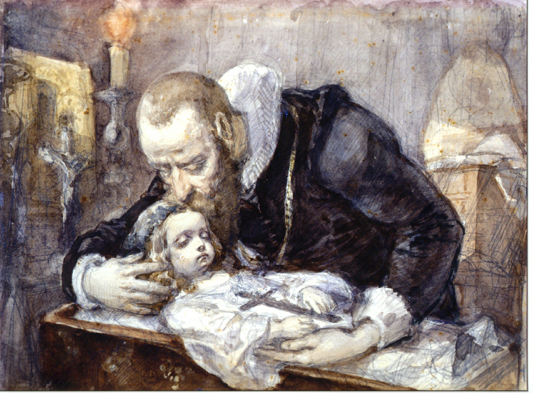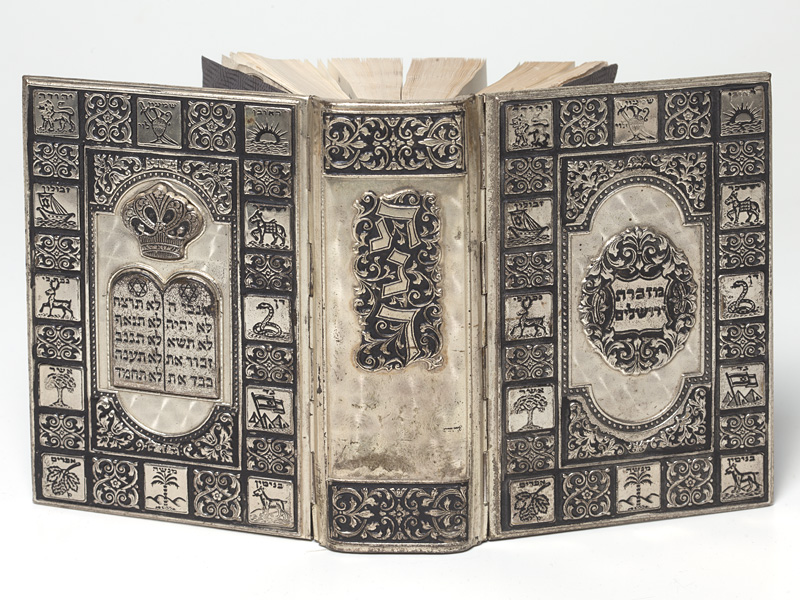|
Laments
A lament or lamentation is a passionate expression of grief, often in music, poetry, or song form. The grief is most often born of regret, or mourning. Laments can also be expressed in a verbal manner in which participants lament about something that they regret or someone that they have lost, and they are usually accompanied by wailing, moaning and/or crying. Laments constitute some of the oldest forms of writing, and examples exist across human cultures. History Many of the oldest and most lasting poems in human history have been laments. The Lament for Sumer and Ur dates back at least 4000 years to ancient Sumer, the world's first urban civilization. Laments are present in both the ''Iliad'' and the '' Odyssey'', and laments continued to be sung in elegiacs accompanied by the aulos in classical and Hellenistic Greece. Elements of laments appear in ''Beowulf'', in the Hindu Vedas, and in ancient Near Eastern religious texts. They are included in the Mesopotamian Cit ... [...More Info...] [...Related Items...] OR: [Wikipedia] [Google] [Baidu] |
Treny Normal
The ''Laments'' (also '' Lamentations'' or '' Threnodies''; , originally spelled ''Threny'') is a series of nineteen threnodies ( elegies) written in Polish by Jan Kochanowski and published in 1580. They are a high point of Polish Renaissance literature, and one of Kochanowski's signal achievements.Poet's Corner: "Jan Kochanowski's ''Threnodies'' ", in '' Warsaw Voice'', no. 43 (470) (October 26, 1997). Includes ''Threnody V''. "Jan KOCHANOWSKI , by Prof. Edmund Kotarski, in the ''Virtual Library of Polish Literature''. [...More Info...] [...Related Items...] OR: [Wikipedia] [Google] [Baidu] |
City Lament
A City Lament is a poetic elegy for a lost or fallen city. This literary genre, from around 2000 BCE onwards, was particularly prevalent in the Mesopotamian region of the Ancient Near East. The Bible's Book of Lamentations concerning Jerusalem around 586 BCE, contains some elements of a city lament. Features In the five known Mesopotamian City Laments, the lament is written in voice of the city's tutelary goddess. The destruction of the city, the mass killing of its inhabitants, and the loss of its central temple are vividly described. Special attention is given to the divine sphere, where the gods order the destruction of the city, the city patron gods implore against this, but in vain. The patron gods are exiled to live as deportees in foreign cites, lamenting their devastated shrine. Subsequently, they return from exile and renew their former existence. Mesopotamia The Lament for Ur, or Lamentation over the city of Ur is a Sumerian language, Sumerian lament composed around the ... [...More Info...] [...Related Items...] OR: [Wikipedia] [Google] [Baidu] |
Lament For Ur
The Lament for Ur, or Lamentation over the city of Ur is a Sumerian lament composed around the time of the fall of Ur to the Elamites and the end of the city's third dynasty (c. 2000 BC). Laments It contains one of five known Mesopotamian "city laments"— dirges for ruined cities in the voice of the city's tutelary goddess. The other city laments are: *The Lament for Sumer and Ur *The Lament for Nippur *The Lament for Eridu *The Lament for Uruk The Book of Lamentations of the Old Testament, which bewails the destruction of Jerusalem by Nebuchadnezzar II of Babylon in the sixth century B.C., is similar in style and theme to these earlier Mesopotamian laments. Similar laments can be found in the Book of Jeremiah, the Book of Ezekiel and the Book of Psalms, Psalm 137 (). Compilation The first lines of the lament were discovered on the University of Pennsylvania Museum of Archaeology and Anthropology catalogue of the Babylonian section, tablet numbers 2204, 2270, ... [...More Info...] [...Related Items...] OR: [Wikipedia] [Google] [Baidu] |
Aulos
An ''aulos'' (plural ''auloi''; , plural ) or ''tibia'' (Latin) was a wind instrument in ancient Greece, often depicted in art and also attested by archaeology. Though the word ''aulos'' is often translated as "flute" or as " double flute", the instrument was usually double-reeded, and its sound—described as "penetrating, insisting and exciting"—was more akin to that of modern woodwind instruments such as oboes or bagpipes with a chanter and (modulated) drone. An aulete (, ) was the musician who performed on an ''aulos''. The ancient Roman equivalent was the ''tibicen'' (plural ''tibicines''), from the Latin ''tibia,'' "pipe, ''aulos''." The neologism aulode is sometimes used by analogy with '' rhapsode'' and ''citharode'' ( citharede) to refer to an ''aulos''-player, who may also be called an aulist; however, ''aulode'' more commonly refers to a singer who sang the accompaniment to a piece played on the aulos. Background There were several kinds of ''aulos'', sin ... [...More Info...] [...Related Items...] OR: [Wikipedia] [Google] [Baidu] |
Percy Bysshe Shelley
Percy Bysshe Shelley ( ; 4 August 1792 – 8 July 1822) was an English writer who is considered one of the major English Romantic poets. A radical in his poetry as well as in his political and social views, Shelley did not achieve fame during his lifetime, but recognition of his achievements in poetry grew steadily following his death, and he became an important influence on subsequent generations of poets, including Robert Browning, Algernon Charles Swinburne, Thomas Hardy, and W. B. Yeats. American literary critic Harold Bloom describes him as "a superb craftsman, a lyric poet without rival, and surely one of the most advanced sceptical intellects ever to write a poem." Shelley's reputation fluctuated during the 20th century, but since the 1960s he has achieved increasing critical acclaim for the sweeping momentum of his poetic imagery, his mastery of genres and verse forms, and the complex interplay of sceptical, idealist, and materialist ideas in his work. Among his bes ... [...More Info...] [...Related Items...] OR: [Wikipedia] [Google] [Baidu] |
Pastoral Elegy
The pastoral elegy is a poem about both death and idyllic rural life. Often, the pastoral elegy features shepherds. The genre is actually a subgroup of pastoral poetry, as the elegy takes the pastoral elements and relates them to expressing grief at a loss. This form of poetry has several key features, including the invocation of the Muse, expression of the shepherd's, or poet's, grief, praise of the deceased, a tirade against death, a detailing of the effects of this specific death upon nature, and eventually, the poet's simultaneous acceptance of death's inevitability and hope for immortality. Additional features sometimes found within pastoral elegies include a procession of mourners, satirical digressions about different topics stemming from the death, and symbolism through flowers, refrains, and rhetorical questions. The pastoral elegy is typically incredibly moving and in its most classic form, it concerns itself with simple, country figures. In ordinary pastoral poems, the ... [...More Info...] [...Related Items...] OR: [Wikipedia] [Google] [Baidu] |
Book Of Job
The Book of Job (), or simply Job, is a book found in the Ketuvim ("Writings") section of the Hebrew Bible and the first of the Poetic Books in the Old Testament of the Christian Bible. The language of the Book of Job, combining post-Babylonian Hebrew and Aramaic influences, indicates it was composed during the Persian period (540-330 BCE), with the poet using Hebrew in a learned, literary manner. It addresses the problem of evil, providing a theodicy through the experiences of the eponymous protagonist. Job is a wealthy God-fearing man with a comfortable life and a large family. God discusses Job's piety with Satan (). Satan rebukes God, stating that Job would turn away from God if he were to lose everything within his possession. God decides to test that theory by allowing Satan to inflict pain on Job. The rest of the book deals with Job's suffering and him successfully defending himself against his unsympathetic friends, whom God admonishes, and God's sovereignty over na ... [...More Info...] [...Related Items...] OR: [Wikipedia] [Google] [Baidu] |
Journal Of American Folklore
The ''Journal of American Folklore'' is a peer-reviewed academic journal published by the American Folklore Society. The journal has been published since the society's founding in 1888. Since 2003, this has been published at the University of Illinois Press. It publishes on a quarterly schedule and incorporates scholarly articles, essays, and notes relating to its field. It also includes reviews of books, exhibitions and events. Editors The following people have been editor-in-chief An editor-in-chief (EIC), also known as lead editor or chief editor, is a publication's editorial leader who has final responsibility for its operations and policies. The editor-in-chief heads all departments of the organization and is held accoun ... of the journal:''Journal of American Folklore'', Centennial Index, Vol. 101, No. 402, pp.20–49 References External links * Quarterly journals Publications established in 1888 English-language journals University of Illinois Press aca ... [...More Info...] [...Related Items...] OR: [Wikipedia] [Google] [Baidu] |
Old Testament
The Old Testament (OT) is the first division of the Christian biblical canon, which is based primarily upon the 24 books of the Hebrew Bible, or Tanakh, a collection of ancient religious Hebrew and occasionally Aramaic writings by the Israelites. The second division of Christian Bibles is the New Testament, written in Koine Greek. The Old Testament consists of many distinct books by various authors produced over a period of centuries. Christians traditionally divide the Old Testament into four sections: the first five books or Pentateuch (which corresponds to the Jewish Torah); the history books telling the history of the Israelites, from their conquest of Canaan to their defeat and exile in Babylon; the poetic and wisdom literature, which explore themes of human experience, morality, and divine justice; and the books of the biblical prophets, warning of the consequences of turning away from God. The Old Testament canon differs among Christian denominations. The Ea ... [...More Info...] [...Related Items...] OR: [Wikipedia] [Google] [Baidu] |
Tanakh
The Hebrew Bible or Tanakh (;"Tanach" . ''''. ; ; or ), also known in Hebrew as (; ), is the canonical collection of scriptures, comprising the (the five Books of Moses), the |
Ancient Near Eastern
The ancient Near East was home to many cradles of civilization, spanning Mesopotamia, Egypt, Iran (or Persia), Anatolia and the Armenian highlands, the Levant, and the Arabian Peninsula. As such, the fields of ancient Near East studies and Near Eastern archaeology are one of the most prominent with regard to research in the realm of ancient history. Historically, the Near East denoted an area roughly encompassing the centre of West Asia, having been focused on the lands between Greece and Egypt in the west and Iran in the east. It therefore largely corresponds with the modern-day geopolitical concept of the Middle East. The history of the ancient Near East begins with the rise of Sumer in the 4th millennium BC, though the date that it ends is a subject of debate among scholars; the term covers the region's developments in the Bronze Age and the Iron Age, and is variously considered to end with either the establishment of the Achaemenid Empire in the 6th century BC, the establ ... [...More Info...] [...Related Items...] OR: [Wikipedia] [Google] [Baidu] |
Veda
FIle:Atharva-Veda samhita page 471 illustration.png, upright=1.2, The Vedas are ancient Sanskrit texts of Hinduism. Above: A page from the ''Atharvaveda''. The Vedas ( or ; ), sometimes collectively called the Veda, are a large body of religious texts originating in ancient India. Composed in Vedic Sanskrit, the texts constitute the oldest layer of Sanskrit literature and the oldest Hindu texts, scriptures of Hinduism. There are four Vedas: the Rigveda, the Yajurveda, the Samaveda and the Atharvaveda. Each Veda has four subdivisions – the Samhitas (mantras and benedictions), the Brahmanas (commentaries on and explanation of rituals, ceremonies and sacrifices – Yajñas), the Aranyakas (text on rituals, ceremonies, sacrifices and symbolic-sacrifices), and the Upanishads (texts discussing meditation, philosophy and spiritual knowledge).Gavin Flood (1996), ''An Introduction to Hinduism'', Cambridge University Press, , pp. 35–39A Bhattacharya (2006), ''Hindu Dharma: Introduc ... [...More Info...] [...Related Items...] OR: [Wikipedia] [Google] [Baidu] |







